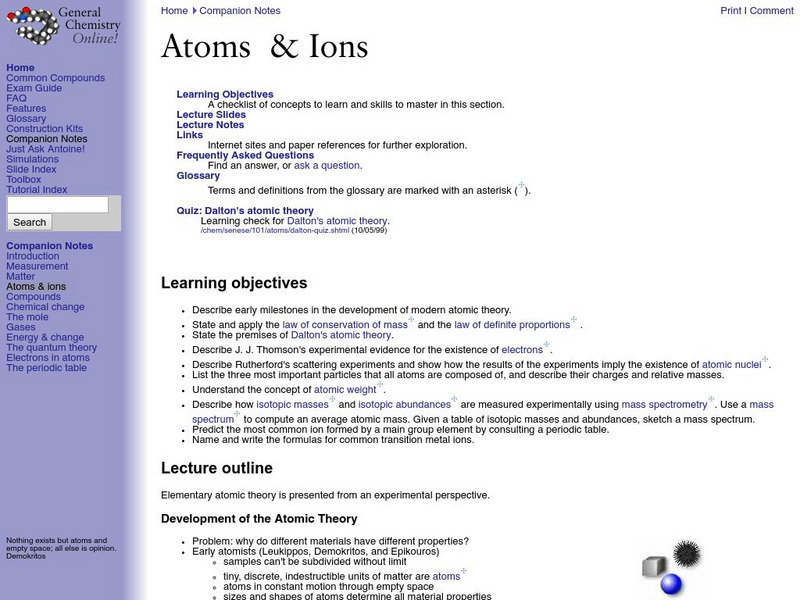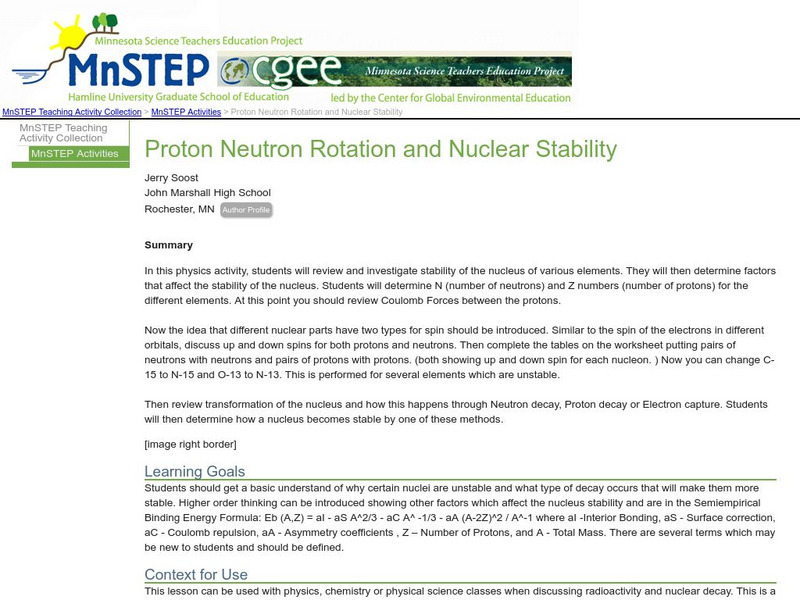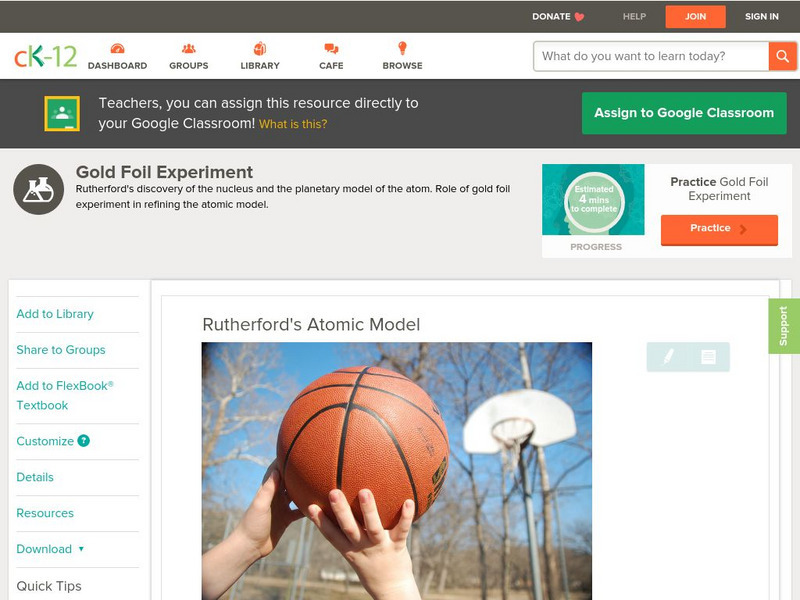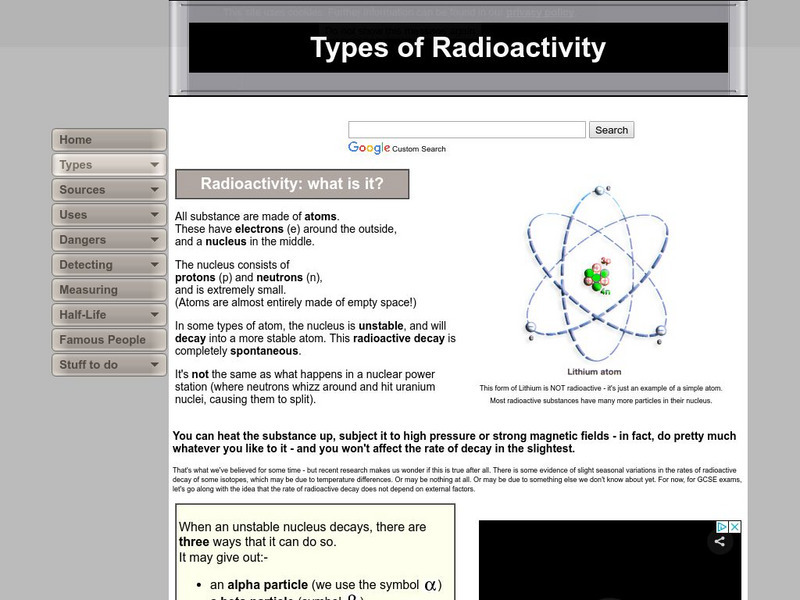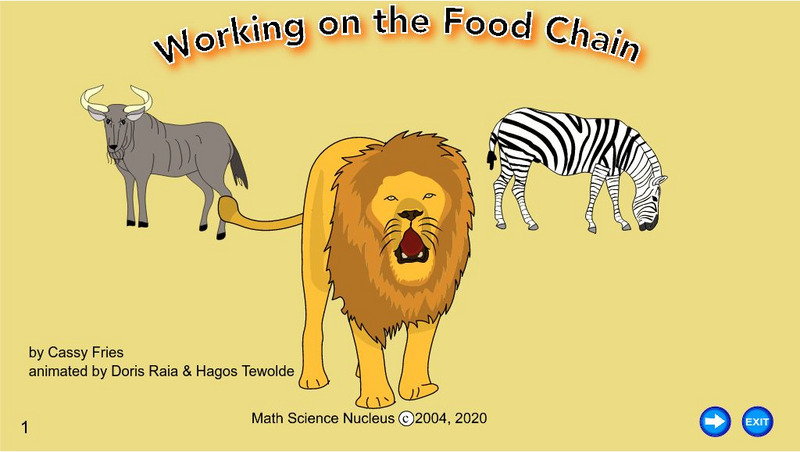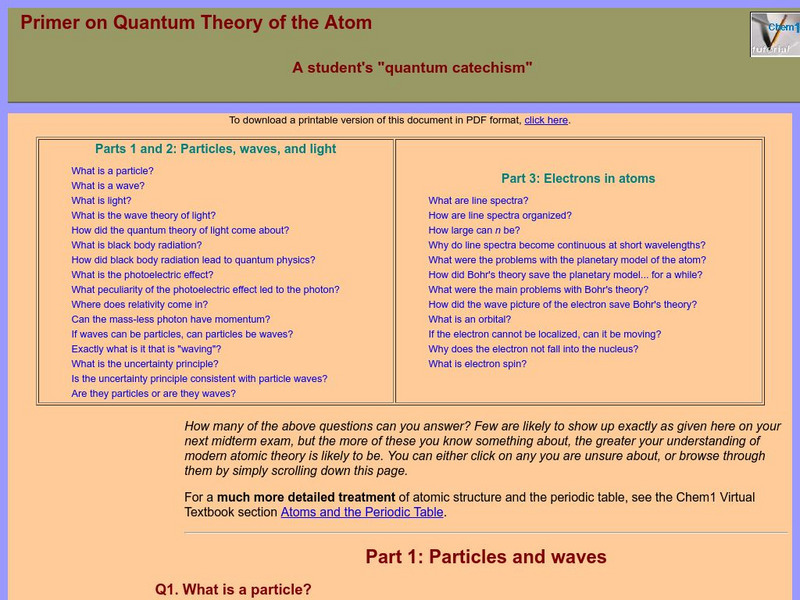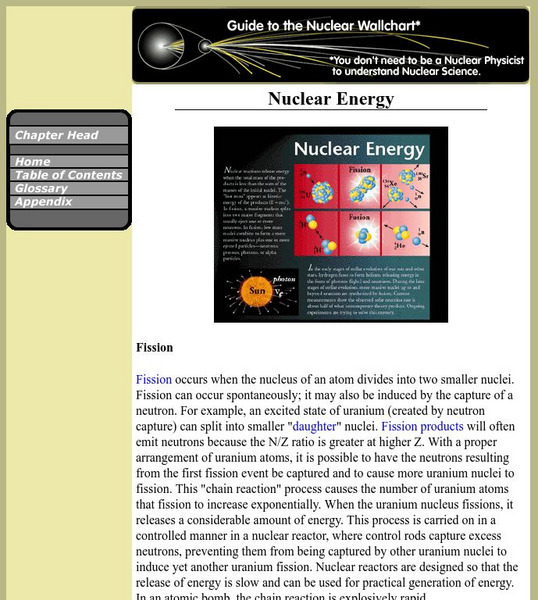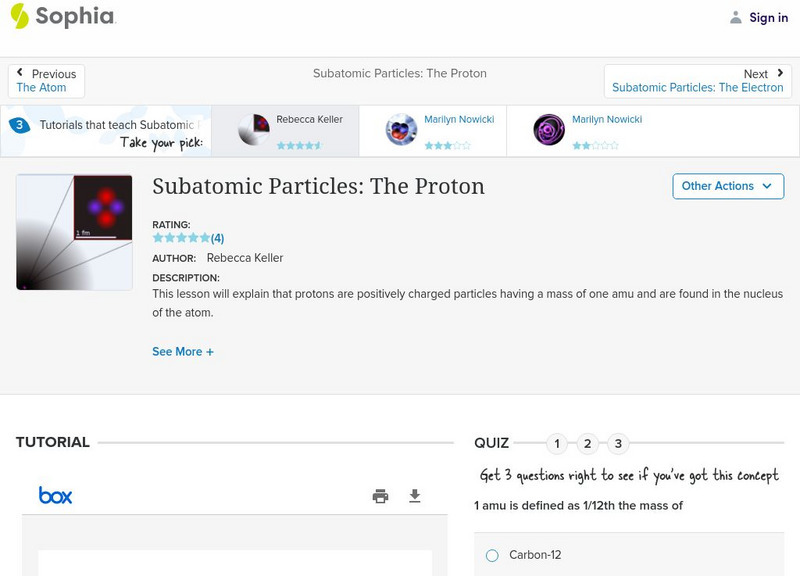Math Science Nucleus
Math/science Nucleus: Observing Different Landforms
Lesson plan with subsequent pages to use with the lesson. Images with landform word match up and additional work on earth modeling.
Georgia Department of Education
Ga Virtual Learning: Nuclear Physics
Through informational text, interactive activities, and virtual animations students learn about the atomic nucleus, fission, fusion, and radioactive decay.
University of Alberta
The University of Alberta: Nmr Spectroscopy
1HNMR theory begins in the nucleus of hydrogen. Complete this tutorial on the 1HNMR spectrum graph to learn about the number of equivalent hydrogens, b) the chemical environment of each hydrogen type and c) the number of neighbouring...
Science Buddies
Science Buddies: How Much Dna Can You Pack Into a Cell?
This project asks you to find out just how much DNA can be fit into a cell. Whether animals with a bigger genome need a larger cell nucleus to store its DNA is uncertain. However, by trying your hand at this science project you can find...
Frostburg State University
General Chemistry Online: Atoms & Ions
This site from the General Chemistry Online of the Frostburg State University provides a review of the history of atomic theory, the discovery of the electron, and the discovery of the nucleus. Details on weighing atoms, ion charges,...
Science Education Resource Center at Carleton College
Serc: Proton Neutron Rotation and Nuclear Stability
In this activity, learners will review and investigate the stability of the nucleus of various elements and determine factors that affect that stability. Students will get an understanding of why certain nuclei are unstable and what type...
University of Cambridge
University of Cambridge: Physics: The Neutron
This site provides a great series on the neutron discovered by James Chadwick. Includes a seven-page series that covers what is inside the nucleus, the elusive neutron, beryllium radiation, Chadwick's discovery, neutrons from beryllium,...
Sophia Learning
Sophia: Ernest Rutherford: Lesson 2
This lesson explains Rutherford's gold foil experiment and the discovery of the nucleus. It is 2 of 3 in the series titled "Ernest Rutherford."
CK-12 Foundation
Ck 12: Physical Science: Rutherford's Atomic Model
[Free Registration/Login may be required to access all resource tools.] Rutherford's discovery of the nucleus and his planetary model of the atom.
Nobel Media AB
The Nobel Prize: Structure of Matter
This site provides an illustrated and animated story that seeks to answer several questions. What are atoms made of? What is keeping a nucleus intact? What happens if you try to separate two quarks? Are quarks fundamental?
CK-12 Foundation
Ck 12: Nuclear Stability and Binding Energy
[Free Registration/Login may be required to access all resource tools.] In this lesson, students learn how scientists study the properties of stable nuclei in order to draw generalizations about what makes a nucleus stable. They look at...
Other
Andy Darvill's Science Site: Types of Radioactivity
Find out about radioactivity, and how it occurs inside an atom's unstable nucleus.
Math Science Nucleus
Math Science Nucleus: Topographic Maps
For a picture of a topographical map, go to this page. There is some information to help you understand what they are.
Math Science Nucleus
Math/science Nucleus: Food Chain Animation
This animation discusses the food chain in a storybook format. The chain is described as a cycle and both herbivores and carnivores are discussed.
New York University
New York University: Law of Conservation of Energy
Site presents a straightforward presentation of Rutherford's work concerning the Law of Energy Conservation. Provides an adequate summary of early science on the nucleus, and includes much needed illustrations.
Simon Fraser University
Chem1 Virtual Textbook: What Is an Orbital?
Acting as part of an overview on quantum theory, this section of the site deals with electrons and orbitals. In addition to explain what an orbital is, the site explains the movement of the electron in relation to the nucleus.
Simon Fraser University
Chem1 Virtual Textbook: Electrons
Acting as part of an overview on quantum theory, this section of the site deals with questions related to electrons, such as "If the electron cannot be localized, can it be moving?" and "Why does the electron not fall into the nucleus?"
Ministerio de Educación (Spain)
Ministerio De Educacion: El Nucleo Atomico
Read about the nucleus and its properties. These pages have a lot of illustrations.
PBS
Pbs: Nova: Doomsday Asteriod: Educator's Guide to Kitchen Comets
Instructions for making a simulated comet nucleus from simple materials.
Simon Fraser University
Chem1 Virtual Textbook: Movement of the Electron
Acting as a subtopic of the General Chemistry Virtual Textbook's section on Atoms and the Periodic Table, this site seeks to answer the question, "Why doesn't the electron fall into the nucleus?"
Lawrence Berkeley National Laboratory
Berkeley Lab: Nuclear Energy: Fission/fusion
Provides a definition and explanation of fission, the splitting of a heavy nucleus into two roughly equal parts, and fusion, the process where two nuclei combine together to form a larger nucleus.
Other
Walter Fendt: Ley De La Desintegracion Radiactiva
Learn how you can find the probability of survival but cannot predict the time of disintegration of an atomic nucleus with this simulation. This site is best viewed with Internet Explorer.
Sophia Learning
Sophia: Subatomic Particles: The Electron: Lesson 3
This lesson will explain that electrons are negatively charged particles with negligible mass and are found in pairs in orbitals surrounding the nucleus of an atom. It is 3 of 3 in the series titled "Subatomic Particles: The Electron."
Sophia Learning
Sophia: Subatomic Particles: The Proton: Lesson 2
This lesson will explain that protons are positively charged particles having a mass of one amu and are found in the nucleus of the atom. It is 2 of 3 in the series titled "Subatomic Particles: The Proton."
Other popular searches
- Cell Nucleus
- Atomic Nucleus
- Comet Nucleus
- Nucleus Dna Replication
- Nucleus of Cells
- The Nucleus
- Nucleus Radioactivity
- Condensation Nucleus
- Nucleus Discovery
- Chromatin Nucleus
- Nucleus and Human Body
- Nucleus Partners




